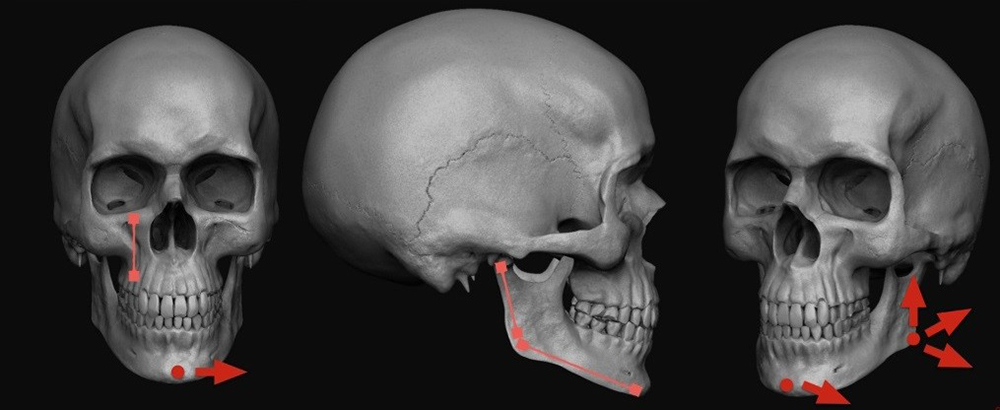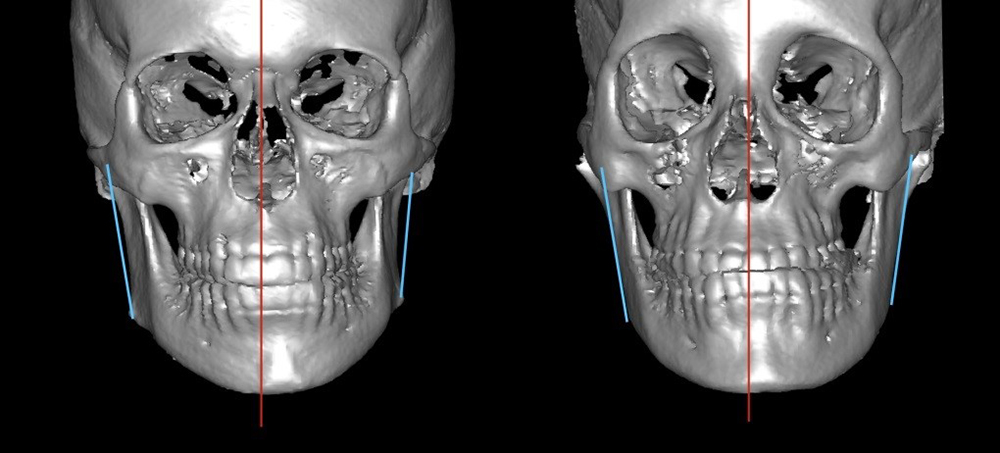By Guilherme Thiesen, Professor, Universidade do Sul de Santa Catarina (UNISUL) e ZENITH, Lato Sensu Postgraduate Course, Florianópolis, SC, Brazil
In the last published study of this research line “Comparison of maxillomandibular asymmetries in adult patients presenting different sagittal jaw relationships”, published in the Dental Press Journal of Orthodontics (vol. 24, no. 4), for the first time in the literature, different intensities of maxillary and mandibular asymmetries were compared together in patients with different sagittal relationships. Researchers from different backgrounds (Unisul/SC, Ulbra/RS, Compass3D/MG, Saint Louis University/USA) brought together 360 adult individuals who had tomographic face images, which were divided into three equal groups: 120 Class I individuals, 120 Class II individuals and 120 Class III individuals. Each group was further subdivided according to the intensity of mandibular lateral deviation: 1) relative symmetry, 2) moderate asymmetry and 3) severe asymmetry. Three reference planes were established on the tomographic images, and several bilateral measurements were taken.
Figure 1. Maxillary and mandibular components commonly associated with patients with asymmetry.
When comparing groups with different intensities of asymmetry, there were significant differences between individuals with relative symmetry and asymmetric individuals, especially in severe cases for mandibular measurements such as lateral deviation of the chin and spatial positioning of the gonion point.
When comparing sagittal relations with each other, no significant differences were found for the same asymmetry intensities, except for the vertical placement of the gonion between Class II and III in severe asymmetry. The researchers observed that individuals with severe Class II asymmetry had a greater bilateral difference in vertical gonion positioning when compared to those with Class III.
Figure 2. Difference observed between Class II and Class III individuals with severe asymmetry.
Thus, the findings of this study demonstrate that the same maxillomandibular skeletal components would be related to bilateral disharmonies responsible for the expression of Class I, II and III asymmetries. This suggests that asymmetries, when present, behave in the same way regardless of sagittal skeletal pattern.
References
THIESEN, G., et al. Is there an association between skeletal asymmetry and tooth absence? Dental Press J. Orthod. [online]. 2019, vol. 21, no. 4, pp. 73-79, ISSN: 2176-9451 [viewed 19 September 2019]. DOI: 10.1590/2177-6709.21.4.073-079.oar. Available from: http://ref.scielo.org/y97j9y
THIESEN, G., et al. Mandibular asymmetries and associated factors in orthodontic and orthognathic surgery patients. Angle Orthod. [online]. 2018a, vol. 88, no. 5, pp. 545-551, ISSN: 0003-3219 [viewed 19 September 2019]. DOI: 10.2319/111517-785.1. Available from: https://www.ncbi.nlm.nih.gov/pubmed/29667467
THIESEN, G., et al. Three-dimensional evaluation of craniofacial characteristics related to mandibular asymmetries in skeletal Class I patients. Am J Orthod Dentofacial Orthop. [online]. 2018b, vol. 154, no. 1, pp. 91-98, ISSN: 0889-5406 [viewed 19 September 2019]. DOI: 10.1016/j.ajodo.2017.10.031. Available from: https://www.ncbi.nlm.nih.gov/pubmed/29957327
To read the article, access it
THIESEN, G., et al. Comparison of maxillomandibular asymmetries in adult patients presenting different sagittal jaw relationships. Dental Press J. Orthod. [online]. 2019, vol. 24, no. 4, pp. 54-62, ISSN: 2176-9451 [viewed 19 September 2019]. DOI: 10.1590/2177-6709.24.4.054-062.oar. Available from: http://ref.scielo.org/8dnq56
External link
Dental Press Journal of Orthodontics – DPJO: <http://www.scielo.br/dpjo>
Como citar este post [ISO 690/2010]:




















Recent Comments